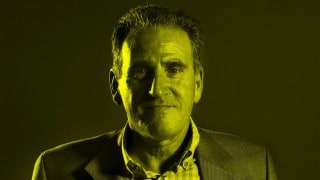Seit vielen Jahren wird auf dem von mir herausgegebenen Wissenschaftsnetzwerk CCNet das Ausmaß und die Ursachen des Artensterbens am Ende der Kreidezeit, der sogenannte K/T mass extinction event, debatiert. Eine Reihe der wichtigsten Diskussionsbeiträge findet sich hier: http://www.staff.livjm.ac.uk/spsbpeis/CCNet-K-T-Schulte-2006.htm
Wegen der enormen Popularität des Dino-Themas sind Massenmedien gerne dazu geneigt, von Zeit zu Zeit besonders sensationelle neue Theorien und Spekulationen zu verbreiten. So etwa auch heute. Der interessierte Leser sollte freilich die Skepsis meines Kollegens David Morrison zu Herzen nehmen, der solchen Sensationsmeldungen wenig abgewinnen kann:
Saurier-Sterben: Die Fliegen sind schuld
US-Wissenschaftler haben herausgefunden, dass Insekten und Parasiten eine entscheidende Rolle beim Aussterben der Dinosaurier gespielt haben.
An der weit verbreiteten These, dass ein Meteoriteneinschlag oder Vulkanausbrüche den Untergang der Giganten befördert hat, hegen die beiden Wissenschaftler George und Roberta Poinar von der Oregon State University grosse Zweifel. Sie sind der Überzeugung, dass die Ausbreitung von Parasiten und Krankheiten den langen Prozess viel besser erklären können.
Die beiden Wissenschaftler haben die Lebensformen dieser Zeit anhand der Einschlüsse in Bernstein untersucht. Dabei haben sie festgestellt, dass vermutlich in der späten Kreidezeit Insekten und Parasiten erstmals Krankheiten übertragen haben. So fanden die Zoologen in den Eingeweiden eines in Bernstein eingeschlossenen Insekts beispielsweise Parasiten. Durch den Biss eines Insekts werden diese auf ein Wirbeltier übertragen und - nachdem sie sich vermehrt haben - wieder von blutsaugenden Insekten aufgenommen.
http://www.20min.ch/news/wissen/story/24643589
————-
Hyperbole in Media Reports on Asteroids and Impacts
News releases and media reporting on asteroid impact-related science frequently exaggerate the uniqueness and significance of new research. We should be skeptical of all claims of scientific revolutions.
David Morrison
Many observers of the science press have noted an increasing tendency for both news releases and printed stories to exaggerate the uniqueness and significance of new research. The writer of a news release does this to increase the probability that the media will cover the story, and the media reporter will go along with this hyperbole or perhaps expand it further to get the story approved for publication by editors or other gatekeepers.
The field of impacts (and impact hazards) is not immune to these trends. In my NASA-supported Web page http://impact.arc.nasa.gov, I try to apply a filter to reduce the noise level in media reports, which would otherwise overwhelm much of the real science.
This is not intended as a general criticism of science reporting. There are many excellent science journalists who understand the issues and provide well-reasoned discussions of context for news stories. Overall, the reporting by science journalists of impact-related stories has been excellent. But a hyperbolic headline added without their knowledge can sometimes catch even the best writers. [...]
Did the KT Impact Cause the Extinction of the Dinosaurs?
The KT (Cretaceous/Tertiary, 65 million years ago) extinction is by now an old story, but sometimes the news media still report dramatically opposed conclusions as if a major debate existed to this day. Certainly the issue was contentious when impact extinction was first proposed by the Alvarez team twenty-five years ago, but a scientific consensus had emerged by the early 1990s. This progress of the Alvarez theory, increasingly supported by new evidence (such as the discovery of the Chicxulub Crater in Mexico), has been chronicled in several excellent books, such as Night Comes to the Cretaceous by James Powell, T. Rex and the Crater of Doom by Walter Alvarez, The End of the Dinosaurs by Charles Frankel, and When Life Nearly Died by Michael Benton.
In spite of the scientific consensus, there was substantial media coverage in 2004 of alternative hypotheses of dinosaur extinction. Major stories have arisen from the work of paleontologist Gerta Keller at Princeton, who has been challenging the impact theory for more than two decades. Recently she has decided that impacts may indeed be implicated, but probably not the Chicxulub impact (just off the coast of the Yucatan peninsula, the impact most earth scientists think is primarily responsible). One hypothesis she has suggested is that while the 100-million-megaton energy Chicxulub impact was insufficient to kill the dinosaurs, a smaller impact 300,000 years later may have done so. Princeton University frequently issues news releases on her work, and sometimes the publicity gets out of hand, with bold headlines such as “KT Mass Extinction Debate Wide Open and in Full Swing,” “The Space Rock Was Framed: Asteroid Cleared in Dinosaurs’ Death,” and “Asteroid Couldn’t Have Wiped Out Dinos.”
One characteristic of media hype is to suggest that all science dealing with the KT extinction is about dinosaurs. Dinosaurs are popular. But dinosaur fossils, which are relatively rare, do not define the mass extinction boundary, which is precisely marked in the marine fossil record by changes in single-celled protists, as well as by the global layer of extraterrestrial material and shocked quartz from the impact.
On the other hand, some scientists discuss the dinosaur extinction without reference to the simultaneous global mass extinction in which more than half of all biological families were lost. This attitude is reflected in the remark by paleontologist David Penny that “We agree completely with the geophysicists that an extraterrestrial impact marks the end of the Cretaceous. But after twenty-five years [scientists] have still not provided a single piece of evidence that this was the primary reason for the decline of the dinosaurs.” [1]
Most scientists consider it to be exceedingly unlikely that the dinosaur extinction was unrelated to the global KT event. In addition to the coincidence in time and increasing evidence that the dinosaur extinction was abrupt, we think we understand how the Chicxulub impact killed large land animals by a combination of brief global firestorm followed by months of cold. Neglecting this relationship is one fatal flaw in this year’s widely reported hypothesis that dinosaurs went extinct because of disparity in the numbers of males and females born. Perhaps in this case the publicity was stimulated by the word sex, as in the Washington Times headline “Why Dinosaurs Died-It’s All about Sex.”
http://csicop.org/si/2005-03/asteroids.html









